Analyzing gRPC messages using Wireshark
Wireshark is an open source network protocol analyzer that can be used for protocol development, network troubleshooting, and education. Wireshark lets you analyze gRPC messages that are transferred over the network, and learn about the binary format of these messages.
In this post, you’ll learn how to configure and use the Wireshark gRPC dissector and the Protocol Buffers (Protobuf) dissector, which are protocol-specific components that allow you to analyze gRPC messages with Wireshark.
Features
The main features of the gRPC and Protobuf dissectors are the following:
Support dissecting (decoding) gRPC messages serialized in the protocol buffer wire format or as JSON
Support dissecting gRPC messages of unary, server streaming, client streaming, and bidirectional streaming RPC calls
Enhanced dissection of serialized protocol buffers data by allowing you to do the following:
- Load relevant
.protofiles - Register your own subdissectors for protocol buffer fields of type
byteorstring
- Load relevant
Capturing gRPC traffic
This post focuses on the analysis of captured gRPC messages. To learn how to store network traffic in capture files, see Capturing Live Network Data from the Wireshark User’s Guide.
Note
Currently, Wireshark can only parse plain text gRPC messages. While Wireshark supports TLS dissection, it requires per-session secret keys. As of the time of writing, the only Go gRPC supports the exporting such keys. To learn how to export keys using Go gRPC – and other languages as support becomes available – see How to Export TLS Master keys of gRPC.Example
Let’s walk through the setup necessary to analyze previously-captured messages that were generated by a slightly extended version of the address book app used in the Protocol Buffers tutorials.
Address book .proto files
The app’s main protocol file is addressbook.proto:
syntax = "proto3";
package tutorial;
import "google/protobuf/timestamp.proto";
message Person {
string name = 1;
int32 id = 2; // Unique ID number for this person.
string email = 3;
enum PhoneType {
MOBILE = 0;
HOME = 1;
WORK = 2;
}
message PhoneNumber {
string number = 1;
PhoneType type = 2;
}
repeated PhoneNumber phone = 4;
google.protobuf.Timestamp last_updated = 5;
bytes portrait_image = 6;
}
message AddressBook {
repeated Person people = 1;
}
This file is identical to the Protocol Buffers tutorial version,
except for the additional portrait_image field.
Note the import statement at the top of the file, it is used to import
Timestamp, which is one of many Protocol Buffers Well-Known Types.
Our variant of the app also defines a person-search service that can be used
to search for address book entries based on selected Person attributes. The
service is defined in person_search_service.proto:
syntax = "proto3";
package tutorial;
import "addressbook.proto";
message PersonSearchRequest {
repeated string name = 1;
repeated int32 id = 2;
repeated string phoneNumber = 3;
}
service PersonSearchService {
rpc Search (PersonSearchRequest) returns (stream Person) {}
}
Because the service uses the Person type defined in addressbook.proto,
the address book .proto is imported at the start of the file.
Setting protobuf search paths
Wireshark gives the most meaningful decodings when it knows about the .proto
files used by the apps whose messages you are analyzing.
You can tell Wireshark where to find .proto files by setting the Protobuf
Search Paths in the preferences accessible from the Edit menu under
Preferences > Protocols > Protobuf.
If our example app’s .proto files are in the d:/protos/my_proto_files directory,
and the official Protobuf library directory is
d:/protos/protobuf-3.4.1/include, then add these two paths as source
directories like this:
By selecting the Load all files option for the app’s protocol directory you
enable preloading of message definitions from the From the Wireshark SampleCaptures page, download the following sample gRPC
capture file created by running the app and issuing a search request:
grpc_person_search_protobuf_with_image.pcapng. Select Open from the File menu to load the capture file in Wireshark.
Wireshark displays, in order, all of the network traffic from the capture file
in the Packet-list pane at the top of the window. Select an entry from the packet-list pane and Wireshark will decode it and show
its details in the lower pane like this: Select an entry from the details pane to see the byte sequence corresponding to
that entry: The app’s server-side port is 50051. The client-side port, which is different
for each RPC call, is 51035 in the sample capture file. You need to tell Wireshark that these ports are carrying HTTP2 traffic. Do this
through the Decode As dialog, which you access from the Analyze menu (or
right-click on an entry from the packet-list pane). You only need to register
the server-side port: Look at the packet-list pane and you’ll see that Wireshark is now decoding HTTP2
and gRPC messages: Select the first gRPC message sent to port 50051, it corresponds to the sample’s
service request message. This is how Wireshark dissects the gRPC request: By examining the HTTP2 message header The Since the Select the second By registering subdissectors, you can have Wireshark further decode fields of
type Here is a brief annotated list of Wireshark versions as they relate to the
support of gRPC and Protocol Buffers: Interested in learning more? Start with the Wireshark User’s Guide. For more
details concerning the example used in this post, as well as other sample
capture files containing gRPC messages, see the gRPC dissector and Protocol
Buffers dissector wiki pages.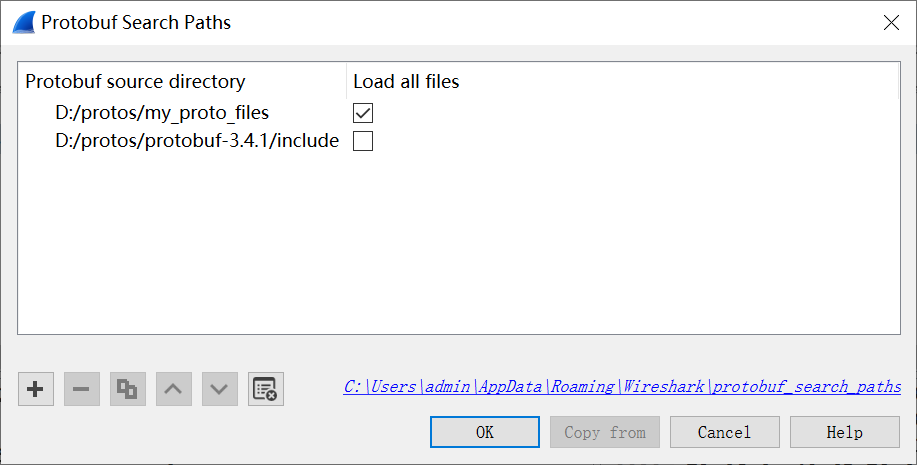

addressbook.proto and
person_search_service.proto files.Loading a capture file




Setting port traffic type
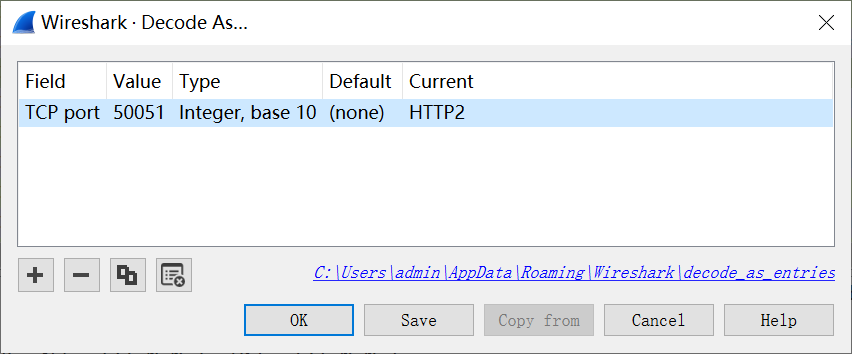

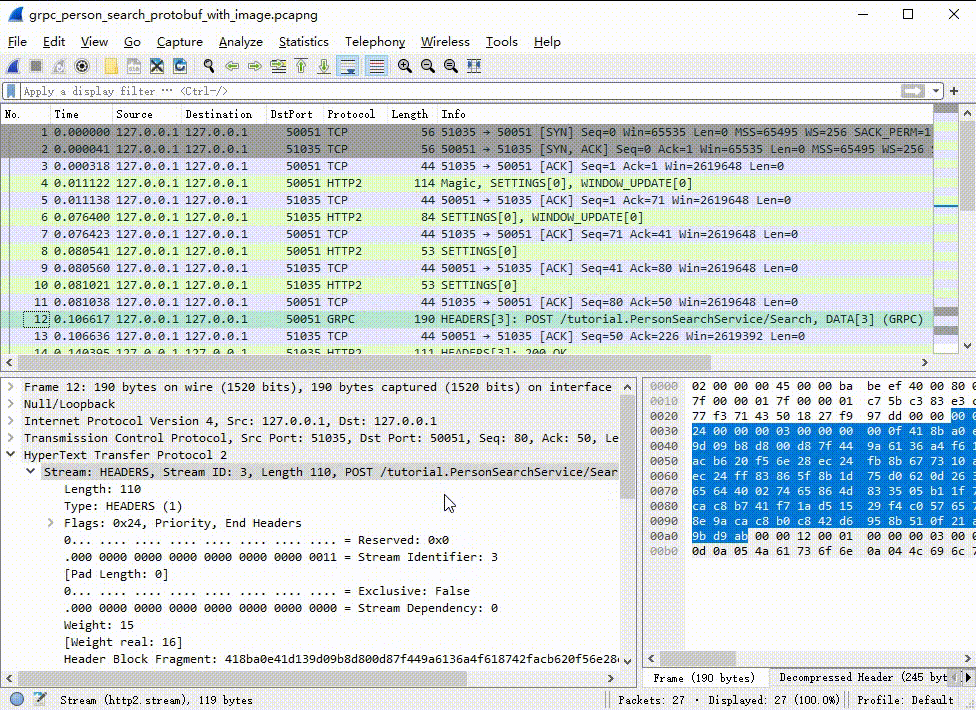

Decoding the search request message
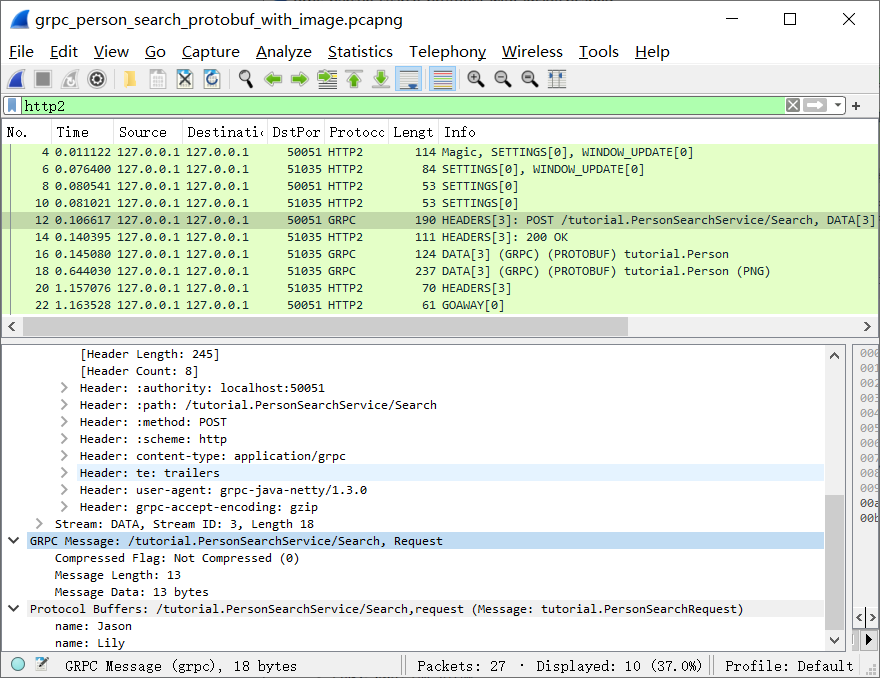

path field, you’ll see the URL to the
app’s service (/tutorial.PersonSearchService), followed by the name of the
invoked RPC (Search).content-type, which is set by the gRPC library, informs Wireshark that the
HTTP2 message content is a gRPC message. By examining the decoded Protocol
Buffers message of the sample gRPC request, you can see that the search request
is for the names “Jason” and “Lily”.Decoding the server-streamed response
Search RPC response is server-streaming, Person objects can be
returned to the client one after another.Person message returned in the response stream
to see its details: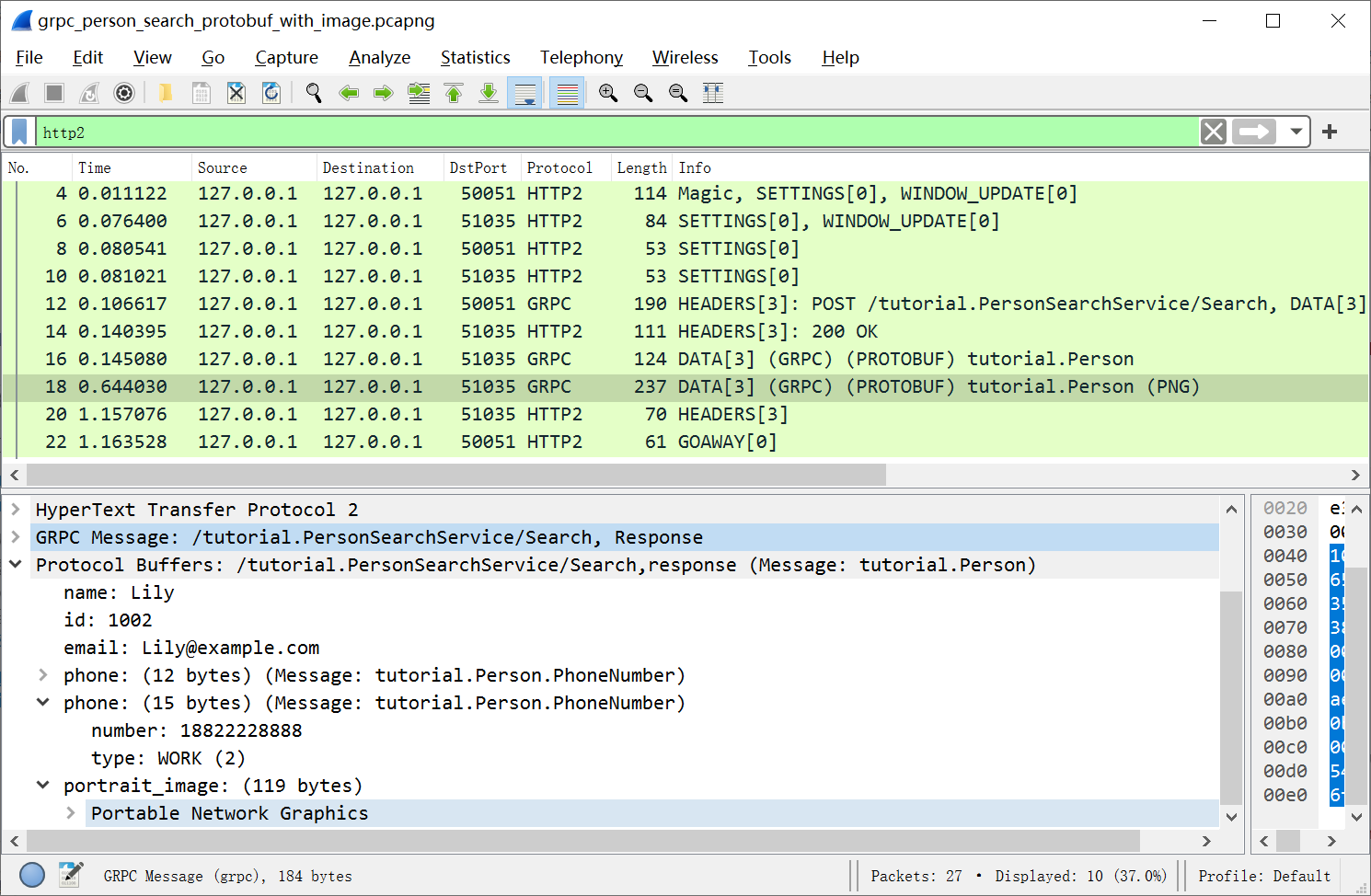

byte or string. For example, to learn how to register a PNG decoder for
the portrait_image field, see Protobuf field subdissectors.History of gRPC and Protocol Buffers support
.proto files or streaming RPCs..proto files, and support of streaming RPCs..proto file support, such as capture-file
search on protocol buffer field values.Learn more